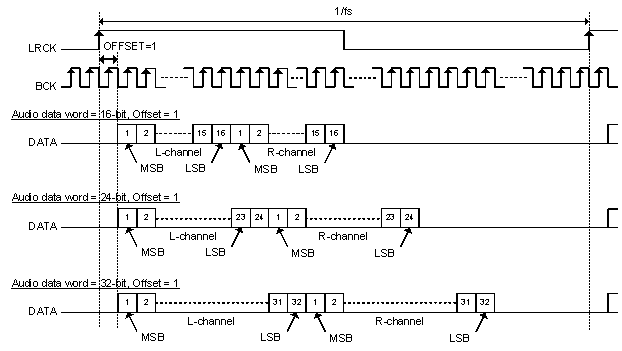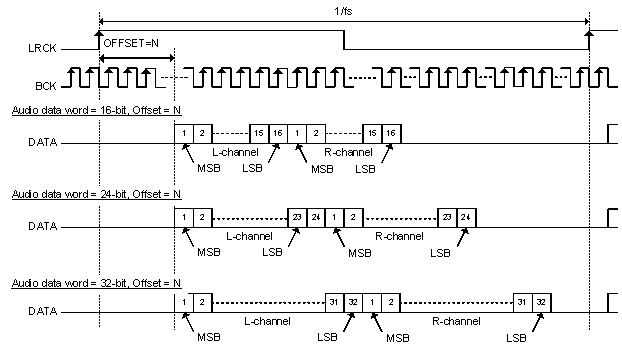JAJSGF2C August 2012 – October 2018 PCM5121 , PCM5122
PRODUCTION DATA.
- 1 特長
- 2 アプリケーション
- 3 概要
- 4 改訂履歴
- 5 概要(続き)
- 6 Device Comparison
- 7 Pin Configuration and Functions
- 8 Specifications
-
9 Detailed Description
- 9.1 Overview
- 9.2 Functional Block Diagram
- 9.3
Feature Description
- 9.3.1 Terminology
- 9.3.2 Audio Data Interface
- 9.3.3 XSMT Pin (Soft Mute / Soft Un-Mute)
- 9.3.4 Audio Processing
- 9.3.5 DAC Outputs
- 9.3.6
Reset and System Clock Functions
- 9.3.6.1 Clocking Overview
- 9.3.6.2 Clock Slave Mode With Master and System Clock (SCK) Input (4 Wire I2S)
- 9.3.6.3 Clock Slave Mode With BCK PLL to Generate Internal Clocks (3-Wire PCM)
- 9.3.6.4 Clock Generation Using the PLL
- 9.3.6.5 PLL Calculation
- 9.3.6.6 Clock Master Mode from Audio Rate Master Clock
- 9.3.6.7 Clock Master from a Non-Audio Rate Master Clock
- 9.4 Device Functional Modes
- 9.5 Programming
- 10Application and Implementation
- 11Power Supply Recommendations
- 12Layout
- 13Register Maps
- 14デバイスおよびドキュメントのサポート
- 15メカニカル、パッケージ、および注文情報
パッケージ・オプション
メカニカル・データ(パッケージ|ピン)
- PW|28
サーマルパッド・メカニカル・データ
- PW|28
発注情報
9.3.2.2 PCM Audio Data Formats
The PCM512x supports industry-standard audio data formats, including standard I2S and left-justified. Data formats are selected via Register (Pg0Reg40). All formats require binary twos-complement, MSB-first audio data; up to 32-bit audio data is accepted.
The PCM512x also supports right-justified and TDM/DSP in software control mode. I2S, LJ, RJ, and TDM/DSP are selected using Register (Pg0Reg40). All formats require binary twos-complement, MSB-first audio data. Up to 32 bits are accepted. Default setting is I2S and 24-bit word length.
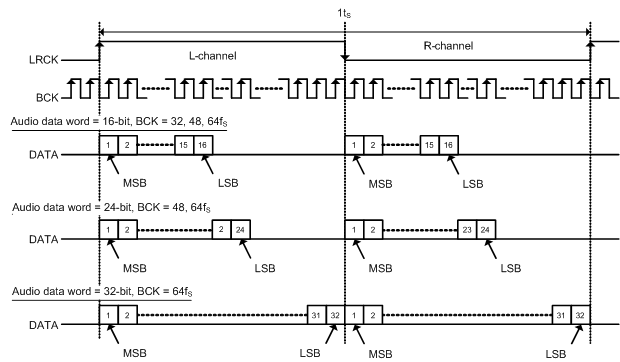 Figure 13. Left-Justified Audio Data Format
Figure 13. Left-Justified Audio Data Format 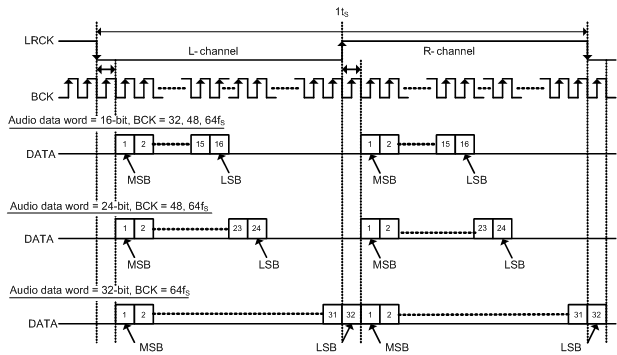
The following data formats are only available in software mode.
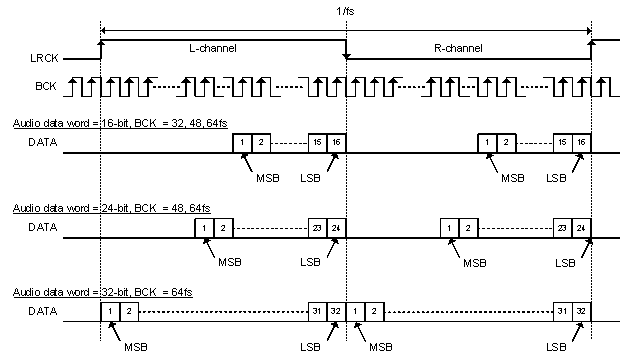
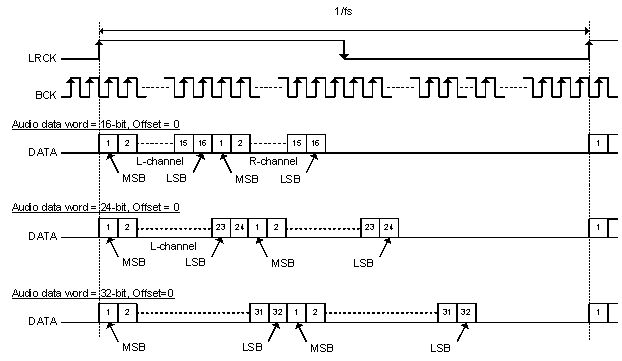
NOTE
In TDM Modes, Duty Cycle of LRCK should be 1x BCK at minimum. Rising edge is considered frame start.
